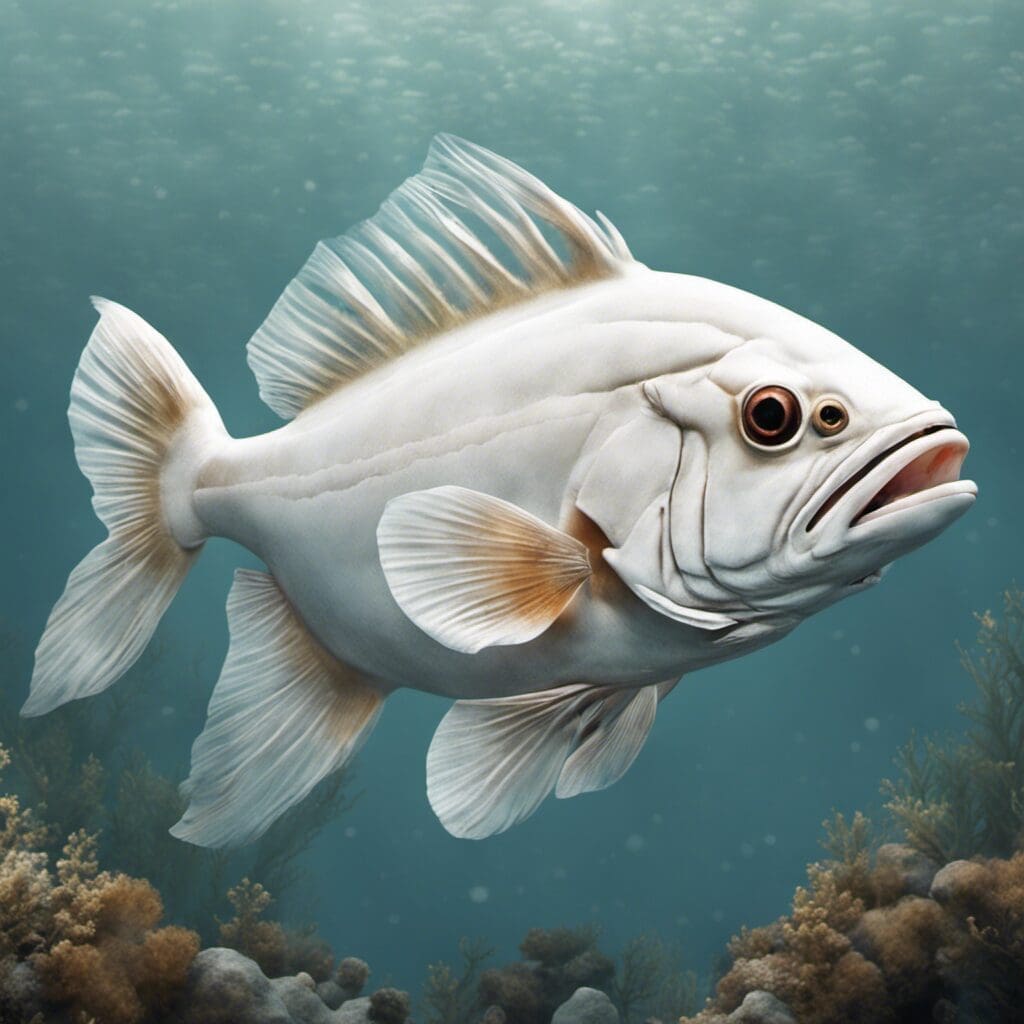Introduction
The White Seaperch, scientifically known as Phanerodon furcatus, is a majestic marine-species from the family Embiotocidae. Giving life to the Pacific Ocean with their magnificent features, these fish are noted for their eye-catching silvery-white hue, thus earning them their name.
Conservation Status
Proudly thriving in the vast expanses of the Pacific, the White Seaperch does not currently feature on any endangered or threatened species list. Conservation efforts surrounding this species mainly focus on maintaining healthy marine habitats and preventing overfishing.
Statistics
| Length (Average) | 20 cm |
|---|---|
| Length (Range) | 15-30 cm |
| Weight (Average) | 0.5 kg |
| Weight (Range) | 0.2-2 kg |
| Life Span (Average) | Up to 10 years |
Distribution
The White Seaperch is widespread along the Pacific Coast, flourishing from the rich waters of Baja California all the way up to British Columbia. Though this species does not typically partake in substantial migration patterns, they do occasionally move short distances offshore and back depending on food availability.
Habitats
Being the avid swimmers that they are, the White Seaperch prefers saltwater habitats covering a wide range of depths, from shallow intertidal zones to deeper offshore environments. They typically thrive in moderate temperatures of around 10-24°C.
When and Where to See
White Seaperch can be commonly spotted throughout the year, with higher frequencies during the warmer months. Being diurnal creatures, they are usually active during the daytime.
Best Fishing Locations & General Tips
These fish can be caught at several classic locations around the Pacific Coast, including:
- Baja California, Mexico
- Monterey Bay, California
- Puget Sound, Washington
- Fraser River, British Columbia
- Santa Monica Pier, California
- Vancouver Island, British Columbia
- Neah Bay, Washington
- Humboldt Bay, California
- Columbia River, Oregon
- Sitka, Alaska
As general advice, look out for clear, calm waters and avoid overfished areas for a successful catch.
How to Catch
The White Seaperch tends to fall for bait like shrimp, squid, or anchovies. Techniques such as bottom fishing and fly fishing are proven to work well with this species. Monsoons are the best season to fish for them, particularly during the early morning or late afternoon hours.
Identification Guide
The White Seaperch are distinguishable by their silvery-white color, forked tail and the dark vertical bar at the base of their tail fin. They might be easily confused with the Silver Surfperch because of their similar color, but the White Seaperch has a sleeker shape and more defined fork in the tail.
Culinary Aspect
The White Seaperch is an appealing culinary delight with its firm meat and mild flavor. Grilled, poached or fried, these fish turn up at a host of seafood restaurants. High in nutrients like omega-3 fatty acids and protein, it’s not just the tantalizing taste, but also the health boosts that make this fish a perfect menu choice.
Additional Information
The White Seaperch are generally a carnivorous species, preying on smaller invertebrates and occasionally algae. Natural predators include larger fish and marine birds. Humans are their primary threat through overfishing and habitat destruction.
References and Further Reading
In addition to the references mentioned, those interested in learning more about the White Seaperch can explore various online databases, marine science texts, and fishing guides. The California Department of Fish and Wildlife’s “Guide to the Coastal Marine Fishes of California” is one recommended reading.

